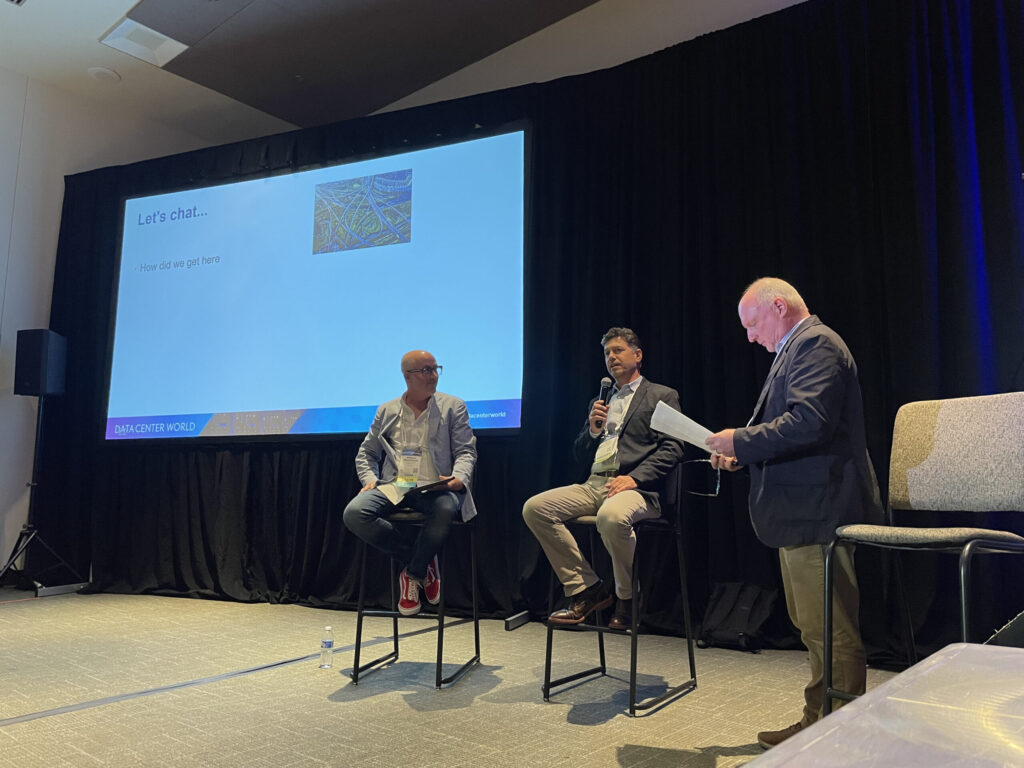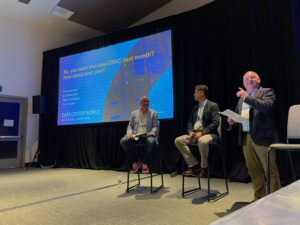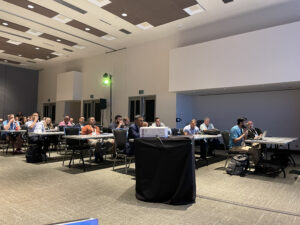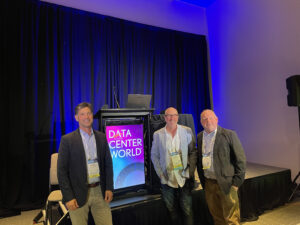


It was an honor to participate in a panel discussion with Bill Winsininski, CEO and Co-Founder of Confluence, an IT advisory that specializes in mission-critical data center, cloud, and network solutions, and our own Mark Germagian, who has a 30-year background in product development in power electronics and a 16-year background in business development in the data center industry. A huge thank you to Raymond Parpart, the director of Data Center Strategy at the University of Chicago, for leading the panel discussion. Below is the breakdown of what was discussed and the solutions that were proposed to help tackle the monster that is the supply chain crisis.
How did we get here?: From your perspective in the supply chain, what happened? Why, even after three years, are we still so broken?
Due to the COVID pandemic, a bottleneck was placed on the global supply chain as demand spiked. With people at home and spending less money on experiences, more consumers focused their cash on products. Also, port congestion played a huge factor. When one employee shows up with COVID, the entire port is shut down. With many companies moving their component manufacturing out of the U.S., that process relies heavily on reliable shipping. This, in turn, meant it was inevitable that the supply chain would be broken.
How are we getting out? We are 3+ years down the road of the world changing from COVID shutting it down. How do you see us recovering?
The first step is reliably communicating upstream to the customers what the actual lead times are. The next step is finding suppliers that are willing to accept master supply agreements where blanket orders are placed (sometimes at 12+ months) for the critical components you need. This keeps a strong relationship with your suppliers and keeps you ahead of the supply chain bottleneck. Now, data center operators, especially with larger power rollouts, must work much more closely with integrators, manufacturers, utilities, economic development, etc., when executing a build project. As for smaller opportunities, providing a turnkey solution is optimal.
Impact on the small guys and landscape: How are you seeing the hyperscalers approaching the impact as well as what about the little guys?
Smaller data center customers are really “shopping around” and finding different alternatives to what they usually purchase. Also, the lead times on some data center equipment are improving. From a manufacturing perspective, we have seen customers begin to give up on some PDU features in order to receive product with a better lead time. Gateview also offers a variety of 70+ models in 1-2 weeks for both the hyperscalers and the little guys.
Leadership: How do you see leadership impacting the current situation moving forward?
Leadership starts with having a vision, believing in that vision, and then communicating it clearly to the people who need to act on it and not giving up on it. You may see resistance when change occurs. At Gateview, there were two visions at the start of the supply chain crisis. One was that the supply chain crisis was not going away anytime soon. The other vision was the realization that we sit between our suppliers and customers. The action from there was to first clearly communicate to our customers what was happening, and then propose that they sign a master supply agreement with us. Here, the customer will commit to using a defined amount of manufacturing capacity and materials by submitting a material retainer for us to secure the components they need. A good example of a leader of supply and fulfillment during this time is Amazon, especially because during this supply chain crisis if you have product you will sell it. Another definition of leadership proposed was having awareness of what’s going on and being able to articulate that and listen to achieve semblance of your goal. Some leadership has led to data centers working with end users to cater to their goals and needs even one or two years out. Customers have begun to understand the need to build out their order pipeline to help secure their needed product. Fun fact: in 2019, the average cost to ship a 40ft container from China to Long Beach was $2,000. In 2021, the average cost of that same container shipping from China to Long Beach was $25,000.
Take care of you!!! How do you see the everyday person who is impacted by the supply chain issues coping? What suggestions might you have to help move through and adapt to this new, but becoming norm!
So far, data centers have done a great job balancing remote work while operations teams still need to enter into the physical buildings. Although this is the case, things are not 100%. With the rise of remote work and schooling during the pandemic, this pushed legislature to provide more technical equipment to more impoverished areas that didn’t have as much before. Also, with online work growing and AI gaining traction, power in the data center racks has risen to support the demand.

